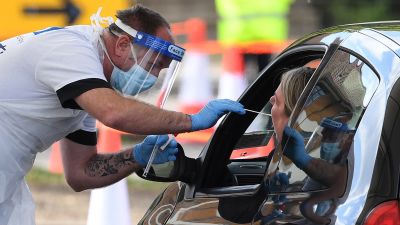Covid prediction website lists Corby and Breckland as future hotspots

Sarah Cooper reports about concern over local lockdowns and the effect they could have on our struggling businesses. Corby and Kettering in Northamptonshire have been named as areas of concern after a significant spike in cases. Meanwhile, some are worried that Norfolk could be next as authorities try to contain an outbreak at a poultry factory.
A new website predicting Covid-19 hotspots suggests cases will continue to rise in Breckland and Corby in the Anglia region.
The site uses reported cases and deaths to estimate the likelihood regions in England and Wales will become COVID-19 'hotspots' in the next three weeks.
The team behind the website, from Imperial College London, define a hotspot as a local authority where there are more than 50 cases of COVID-19 per 100,000 of the population per week.
The data suggests Corby has a 79 % chance of becoming a hotspot, Breckland 76% and Great Yarmouth 61%.
Using data on daily reported cases and weekly reported deaths and mathematical modelling, the team report the probability (%) that a local authority will become a hotspot in the following week.
The site also provides estimates for each local authority in England and Wales on whether cases are likely to be increasing or decreasing in the following week and the probability of R(t) being greater than 1 in the following week.
The reproduction number R(t) indicates the number of people each infected person will pass the virus onto. An R(t) larger than 1 indicates the outbreak is not under control and cases will continue to increase.
Imperial College says the site will be updated daily.
Currently, highlighted hotspots include Pendle, Bolton, Corby and Oldham with more than 50 reported cases per 100,000 population in the past week.
But while Oldham is declining, cases in Corby are continuing to go up, suggesting it will stay a hotspot over the next three weeks.
The website was produced by the Department of Mathematics in collaboration with the WHO Collaborating Centre for Infectious Disease Modelling within the MRC Centre for Global Infectious Disease Analysis (GIDA), and Abdul Latif Jameel Institute for Disease and Emergency Analytics (J-IDEA) at Imperial.
The predictions assume no change in current interventions (lockdowns, school closures, and others) in a local authority beyond those already taken about a week before the end of observations. Each local authority is also treated independently of its neighbours in the modelling, i.e. the epidemic in one local authority does not affect or is not affected by the situation in any adjacent a local authority.
The team also note that an increase in cases in a local authority can be due to an increase in testing, which the model does not currently account for. The model also assumes all individuals within each local authority are equally likely to be infected, so demographic factors such as the age structure of the population are not considered.
Dr Swapnil Mishra, from the MRC Centre for Global Infectious Disease Analysis, said: "We provide weekly predictions of the evolution of COVID-19 at the local authority level in England and Wales. Our model helps to identify hotspots - probable local areas of concern. We hope that our estimates will enable swift action at the local level to control the spread of the epidemic."